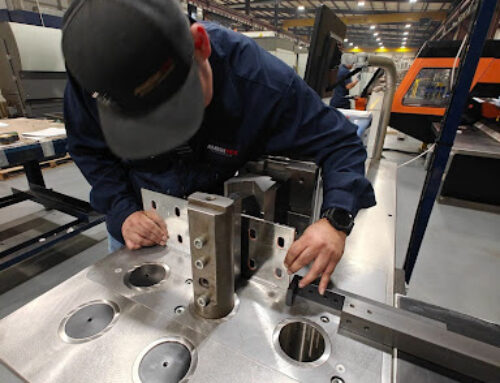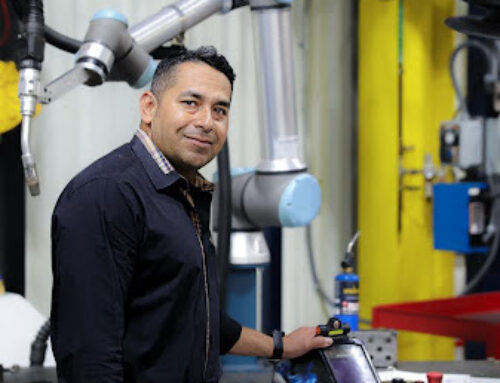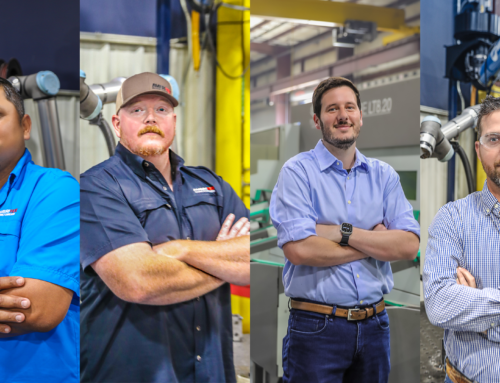Do you really need the shop that’s laser cutting your custom metal fabrications to deburr the edges or grind the tabs before delivering your part?
The answer depends on a few key factors, like application, material, and plans for additional post-processing. And, of course the shop’s ability to produce laser cut parts with good edge quality in the first place matters a lot.
Deburring and tab grinding add cost and time to any project, so it’s smart to consider whether these operations are necessary for your quick-turn sheet metal parts.
Considerations for Deburring and Grinding Tabs
At Ameritex, our customers often don’t know if they need additional operations to improve edge quality until they see the quality of the parts we produce. That said, there are considerations that can help you determine if it makes sense for us to perform these operations.
Deburring the edges.
Deburring consists of running a laser cut part through a deburring machine—frequently multiple times depending on material thickness and cut quality—to smooth the edges. It’s a simple enough automated process as long as the parts are big enough for the machine.
We highly recommend deburring aluminum parts because the edges are often bumpy after being laser cut. Steel and stainless steel parts, on the other hand, typically come off the laser cutter with edges that are already very smooth—but sharp. Depending on the application of the part, those sharp edges might not be an issue, and we can skip deburring altogether.
Things become more complicated when we have to deburr intricate parts under 6” x 2”, because we have no choice but to perform the operation by hand using something like a belt sander or a Dynafile. These manual operations can add significant cost to the part.
If you have small parts with a lot of complexity, consider whether this expensive and labor-intensive process is necessary. In many cases, you may be able to use the parts without this additional step.
It always helps to have visuals, and customers are often surprised by how good our parts look before deburring.
Here are some images comparing standard edges and deburred edges:
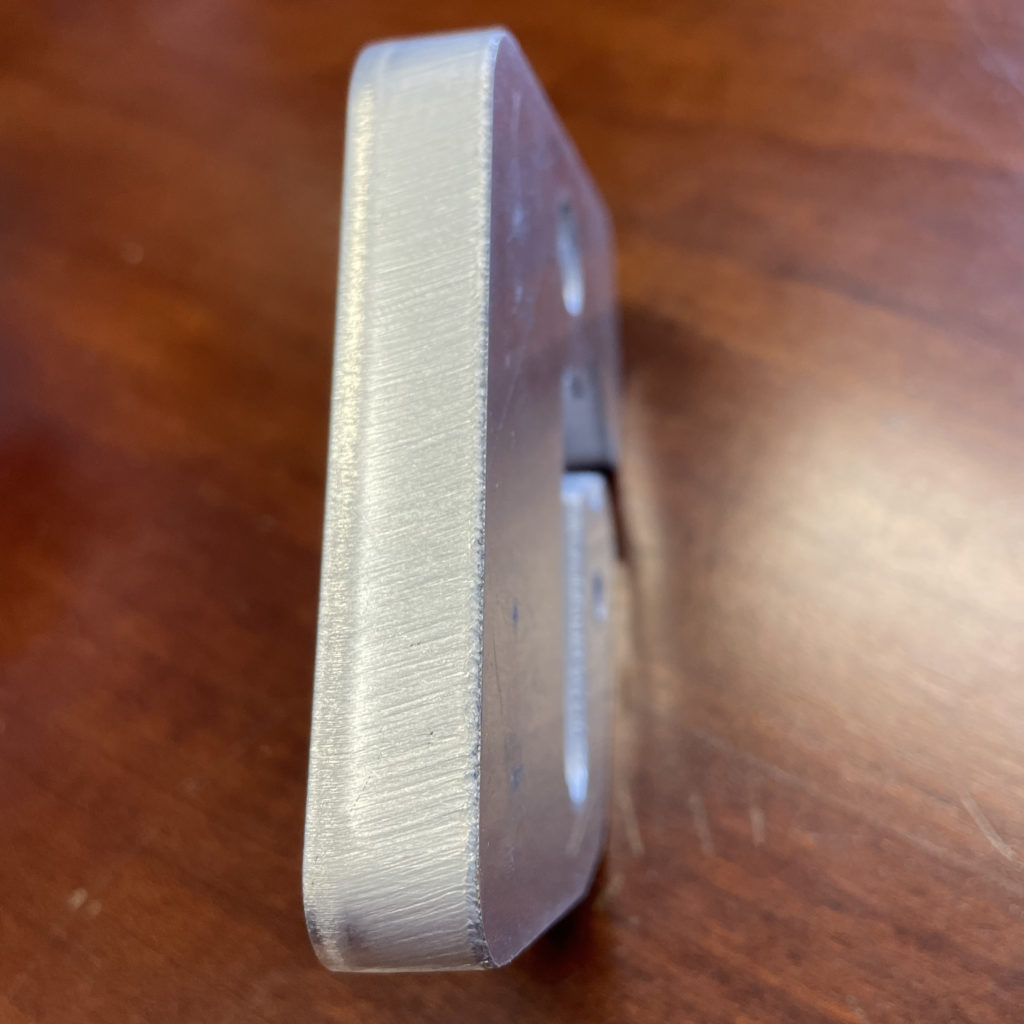


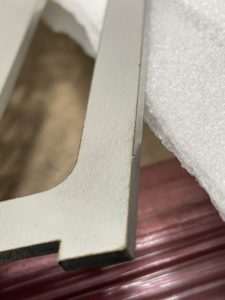
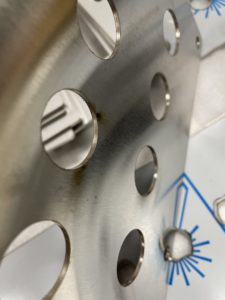
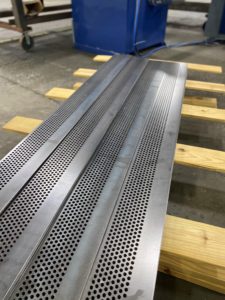
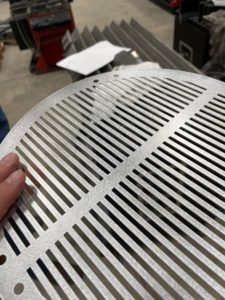
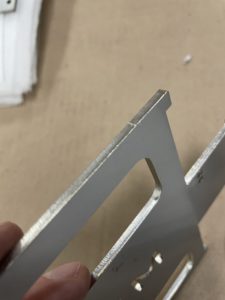
Grinding the tabs.
When we’re laser cutting parts that are small to medium-sized, we’ll place locator tabs on the sheet metal. Those tabs hold the part end of the sheet in place so that it doesn’t tilt upward during cutting.
Our default is to grind those tabs off once we break the part out of the sheet—and frankly, we spend quite a lot of time doing it.
To the right is what the tabs look like if we don’t grind them off.
Common Applications with Low Edge Quality Requirements
We make big washers for a number of our customers, and that’s one great example of a part that probably doesn’t need to be deburred. If the part is going out into a field where it’ll never be touched, there’s no need to worry about the sharp edges.
Ultimately, you make the final decision on whether or not you want us to deburr the edges or grind the tabs of your parts. But for your consideration, there is a general rule of thumb to follow:
If your part will undergo additional post-processing after it leaves our shop (such as welding or preparing for paint), whoever performs those operations will handle rounding the edges, so paying us to do it probably isn’t in your best interest.
Ameritex Produces Laser Cut Parts with Superb Edge Quality
Machine capabilities and operator expertise play major roles in the edge quality of laser cut parts—and we excel in both these areas at Ameritex.
Our advanced fiber laser cutting technology is capable of cutting smooth edges that may eliminate the need for deburring. Our highly skilled machine operators have the expertise to ensure that only the highest quality materials enter each machine, and they take pride in maintaining the machines to keep them spotless and running flawlessly.
If you’re looking for a shop with the right people, capabilities, and technology to produce your custom metal fabrications, let’s work together!

